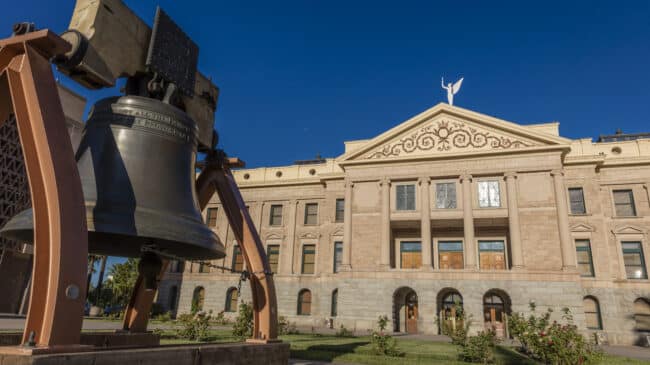Arizona Public Safety Personnel Retirement System Tier 3 reform is working
- Arizona Public Safety Personnel Retirement System, PSPRS, Tier 3 arose from a bipartisan, stakeholder-negotiated pension reform in 2016, after a rapid freefall saw PSPRS decline from 120% funded in 2001 to nearly 40% funded by 2016.
- Tier 3 included a risk-managed pension design with a 50/50 contribution rate split between employers and employees, consistent with many other state pension systems, including the Arizona State Retirement System, Washington State’s public safety pension, and Michigan’s teacher pension.
- 50/50 cost sharing is foundational to Tier 3 risk management and a key reason employers have felt confident enough in PSPRS’ trajectory to make $5 billion in supplemental contributions since 2019, improving PSPRS to nearly 70% funded today.
Senate Bill 1365 would break Tier 3’s 50/50 cost-sharing mechanism and risk higher taxpayer costs
- Senate Bill 1365 would cap the contribution rate paid by Tier 3 employees at 9.5% and require employers to cover any needed remainder in the likely event of underperforming markets.
- Reason Foundation’s actuarial modeling for PSPRS forecasts that SB 1365 could result in taxpayers being required to cover approximately $1 billion in unanticipated additional costs over the next 30 years, assuming market conditions similar to those seen since 2000.
- Applying a cap on employee contributions would return to the types of design features that allowed PSPRS to get over $10 billion underfunded.
SB 1365 unlikely to affect recruitment & retention
- The push to cap employee contribution rates in PSPRS Tier 3 is rooted in the idea that it would help improve recruitment and retention, but states where pensions already have caps on employee contribution rates have also seen recruitment and retention challenges.
- Studies and actual employee turnover data show that pensions rank far down the list of employee priorities compared to others like salary, flexibility, work-life balance, job satisfaction, and upward mobility.
- States that have expanded employee pension benefits under similar logic since the Great Recession have seen higher costs but no discernable change in recruitment and retention.
Takeaway
With over $7 billion in unfunded liabilities remaining to tackle, it would be poor financial stewardship to fundamentally alter the design of a successful PSPRS reform only seven years into a multidecade turnaround project, especially given the weak influence pensions have on employee recruitment and retention.
Full Backgrounder: Arizona Senate Bill 1365 threatens higher taxpayer costs and pension risks
Stay in Touch with Our Pension Experts
Reason Foundation’s Pension Integrity Project has helped policymakers in states like Arizona, Colorado, Michigan, and Montana implement substantive pension reforms. Our monthly newsletter highlights the latest actuarial analysis and policy insights from our team.


